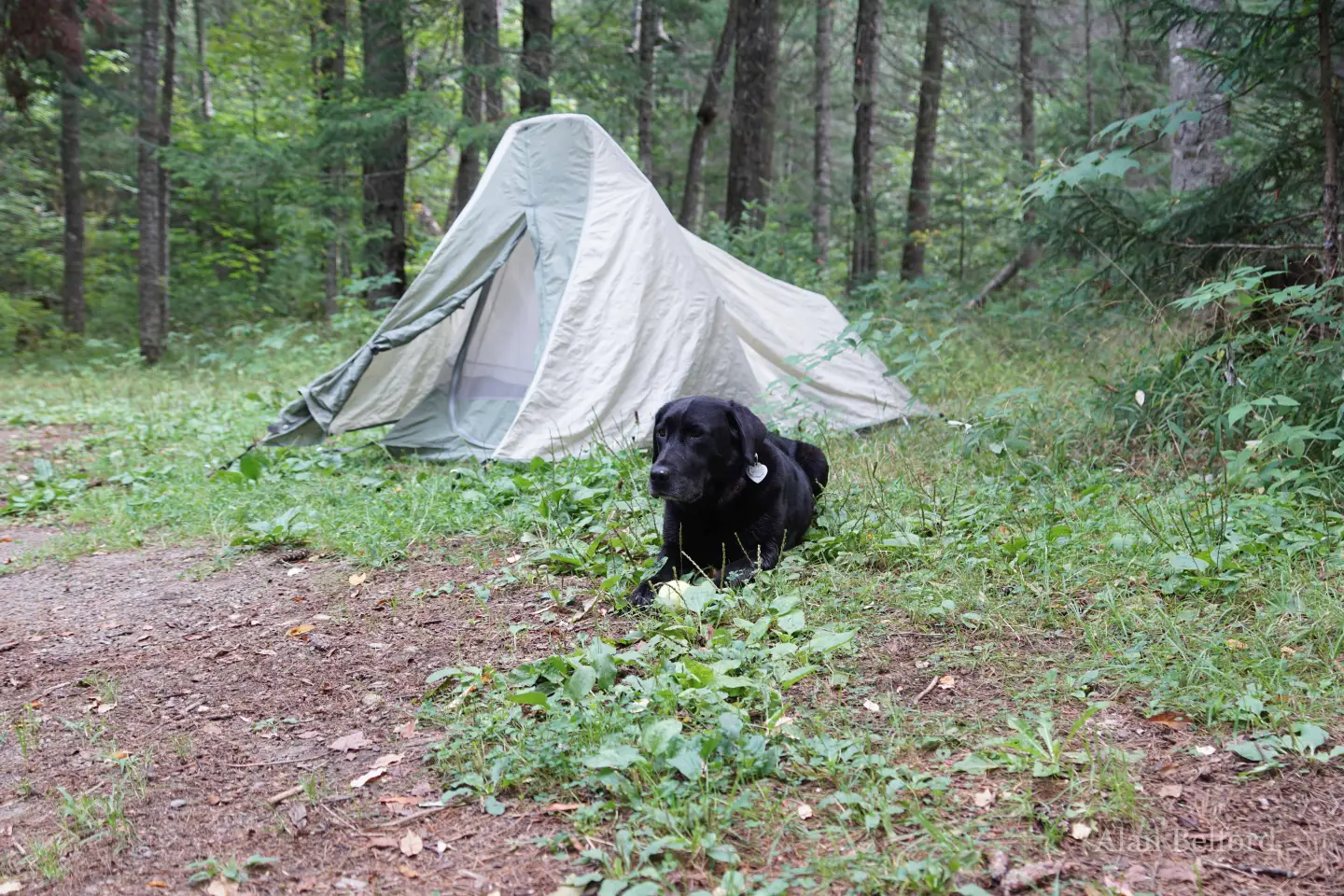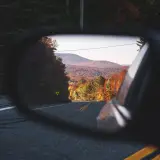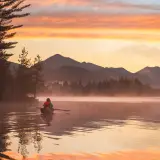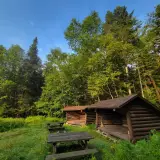Birding and setting up camp
Any chance to spend time in Vanderwhacker Mountain Wild Forest is an opportunity to be grasped, so I was glad when work took me that direction a few weeks ago. I had started my day by birding along the route from home toward my planned camp along Moose Pond Club Road, the road which leads to the trailhead for Vanderwhacker Mountain itself. The birding continued as I explored the road and set up my tent as the afternoon and evening coolness seemed to fuel the birds to chatter.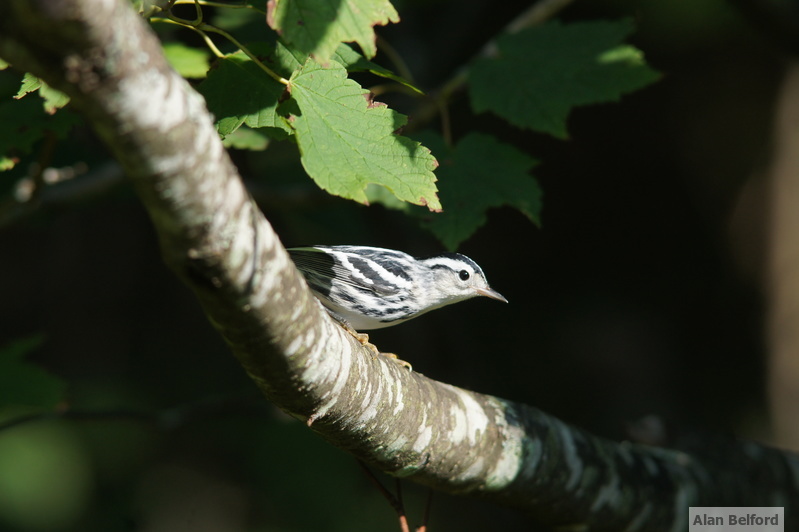
There were Black-throated Blue, Black-throated Green, Yellow-rumped, Nashville, and Black-and-white Warblers, the complex trills of Winter Wrens, both Blue-headed and Red-eyed Vireos, and lots of Swainson’s Thrushes – one of my favorite songs to hear in the evening. After pitching my tent, the birds lured me for a walk along the road and my list soon included Red Crossbills which buzzed and called overhead. Red Crossbill numbers have grown in the Adirondacks this summer with our current cone crop, and I’ve been coming across them regularly since June.
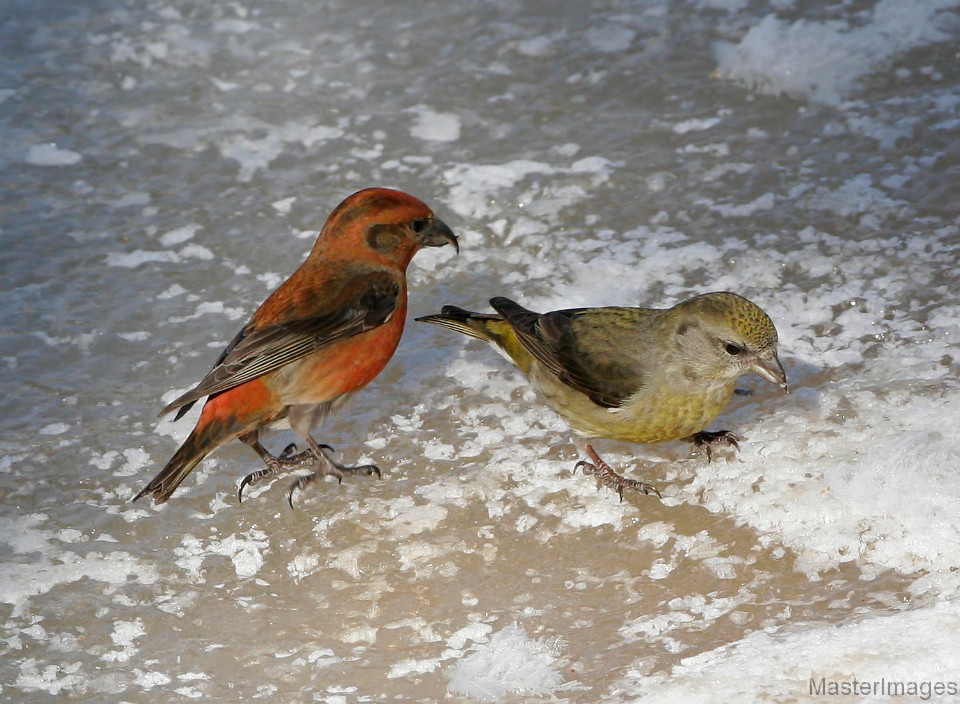
The night in camp
I returned to camp to battle a growing contingent of mosquitoes while I made my dinner, but despite the bugs, the natural ambience and birds made a camp meal of boxed macaroni and cheese and canned green beans taste like fine dining; there are few more peaceful things than enjoying a meal in the woods.
I headed off to investigate around Cheney Pond for the evening – my camp was centrally located for places to explore – and I returned to camp after darkness had fallen, listening for a Barred or Northern Saw-whet Owl. I’ve heard both species while camping in that vicinity in the past.
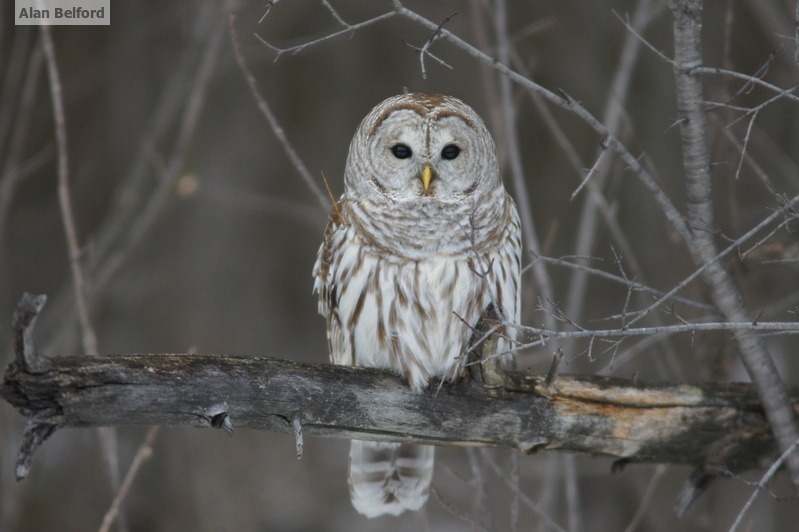
I didn’t hear either on this occasion, but as I was leaning against my car and listening to the darkness, I noticed a northern dusky salamander crawling across my campsite. I scooped it up and took it down by the nearby stream rather than have it risk a long overland journey or possibly hide beneath one of my car tires. I then decided to retire to my tent, where as I usually do, I looked over maps and plans for the next day. I was soon falling asleep on my maps and notes, and I finally decided to turn off my light.
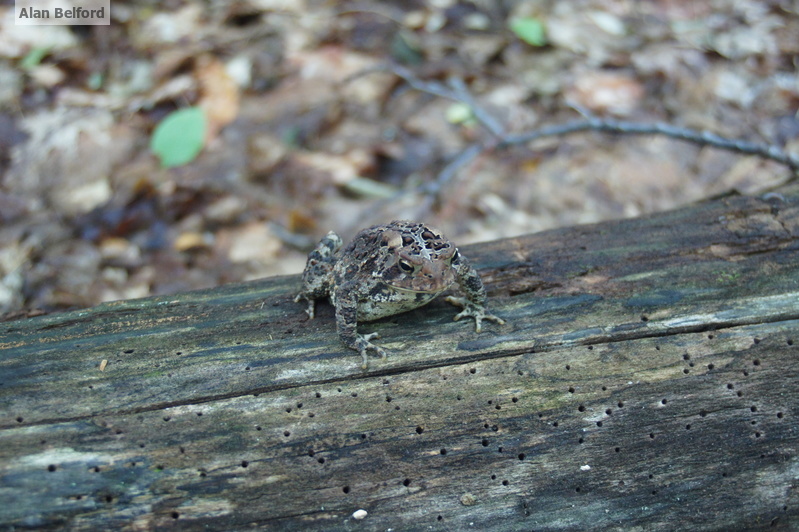
A new morning
Daybreak came early and I woke to the songs and calls of the surrounding cool, foggy forest, forcing my sleepy eyelids open to look around at the gray world. I was tired and it was rather chilly outside of my sleeping bag, but I love that time of day. And so I pushed myself reluctantly to my knees to get my bearings as the world awoke to Purple Finches, Black-capped Chickadees, and both Hermit and Swainson’s Thrushes, and then I slowly clambered from the tent.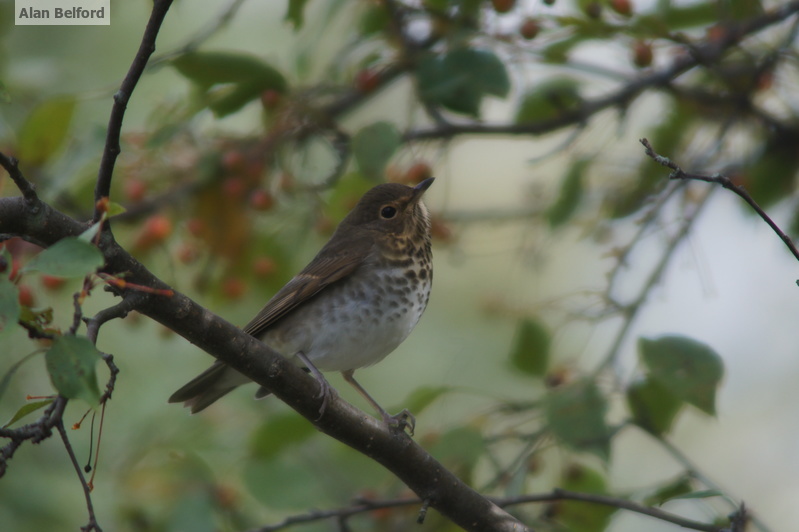
I organized my gear for the day before starting on breakfast, the cold milk in my cereal bowl further chilling my cold hands in the morning air. But I found a Black-backed Woodpecker as I did – no good bird comes without a little sacrifice! – and the cool air kept the mosquitoes at bay so I was appreciative of it. I’ll always take cold hands over incessant buzzing and itching!
My camp chores and breakfast finished, I headed down the road; I would return to take down my tent later. My first stop was the trail into Hewitt Eddy, accessed along Route 28N near the junction with Moose Pond Club Road – so it was a convenient place to begin. The trail winds along the Boreas River, cutting through a combination of mixed forest habitats – some with a boreal nature – and the birds I found reflected that fact with Blue-headed Vireos, Red-eyed Vireos, Dark-eyed Juncos, Winter Wrens, Swainson’s and Hermit Thrushes, and a list of warblers which included Blackburnian, Northern Parula, Black-throated Blue, and Magnolia. I also found yet another pair of Red Crossbills which zipped above calling throughout my hike so it was difficult to know for certain how many crossbills there actually were.
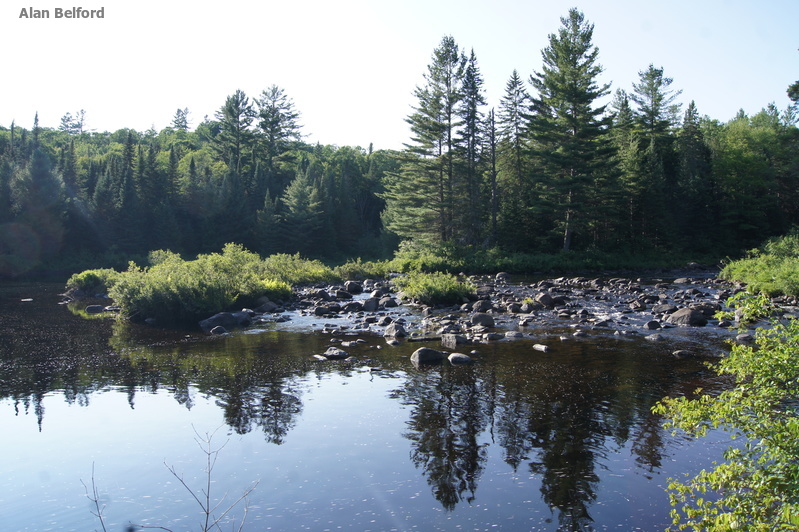
The trail is not long or difficult, but it is currently overgrown, so anyone going should be prepared for tangles of vegetation crossing the trail, and I pushed my way through the dew-drenched leaves, soaking myself with chilly water in the process. But the route not only offers birds but also the peaceful babble of the Boreas River, before it leads to Hewitt Eddy itself where I’ve found beavers in the past.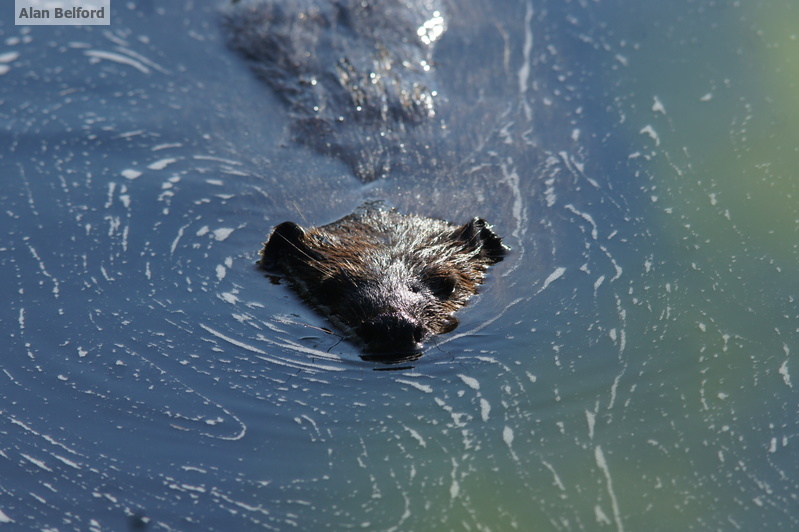
I eventually retraced my steps and drove back to camp, but before I continued down the road for another adventure, I enjoyed a peaceful time sitting and reflecting in camp and taking in the wilderness-like seclusion it offered. That is one of the things I love the most about camping anywhere, but in the remote places in the Adirondacks in particular. I have no television, no cell phone reception, and no computer to occupy my time and energy. Even though I’m often camping to help facilitate my early morning work schedule, the simplicity camping offers is restful and therapeutic. And so I took in the setting for a while, before turning my attention to cleaning up the campsite, collecting bits of trash which others before me had left behind. It is always a good goal to leave a campsite cleaner than you found it.
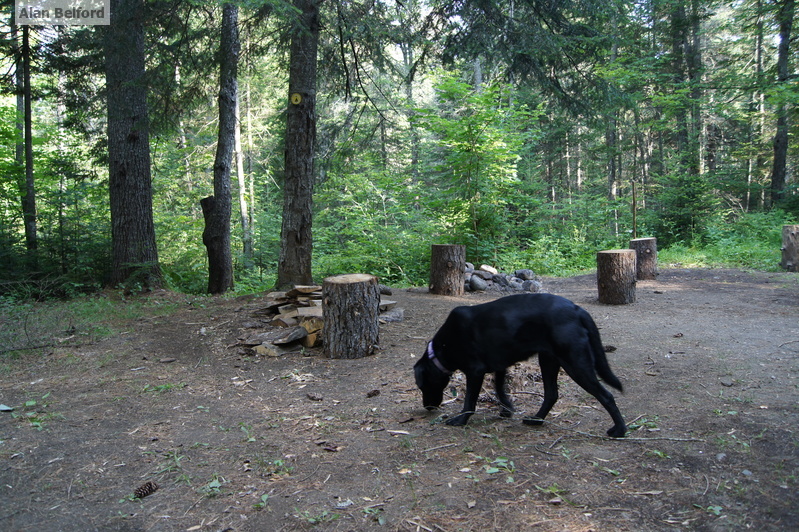
My tidying and reflection complete, I loaded up and headed down the road.
Late summer and fall offer amazing Adirondack camping and adventure opportunities! Don’t miss out! And if camping isn’t your thing, then check out our lodging and dining pages to learn how you can enjoy an Adirondack getaway!
